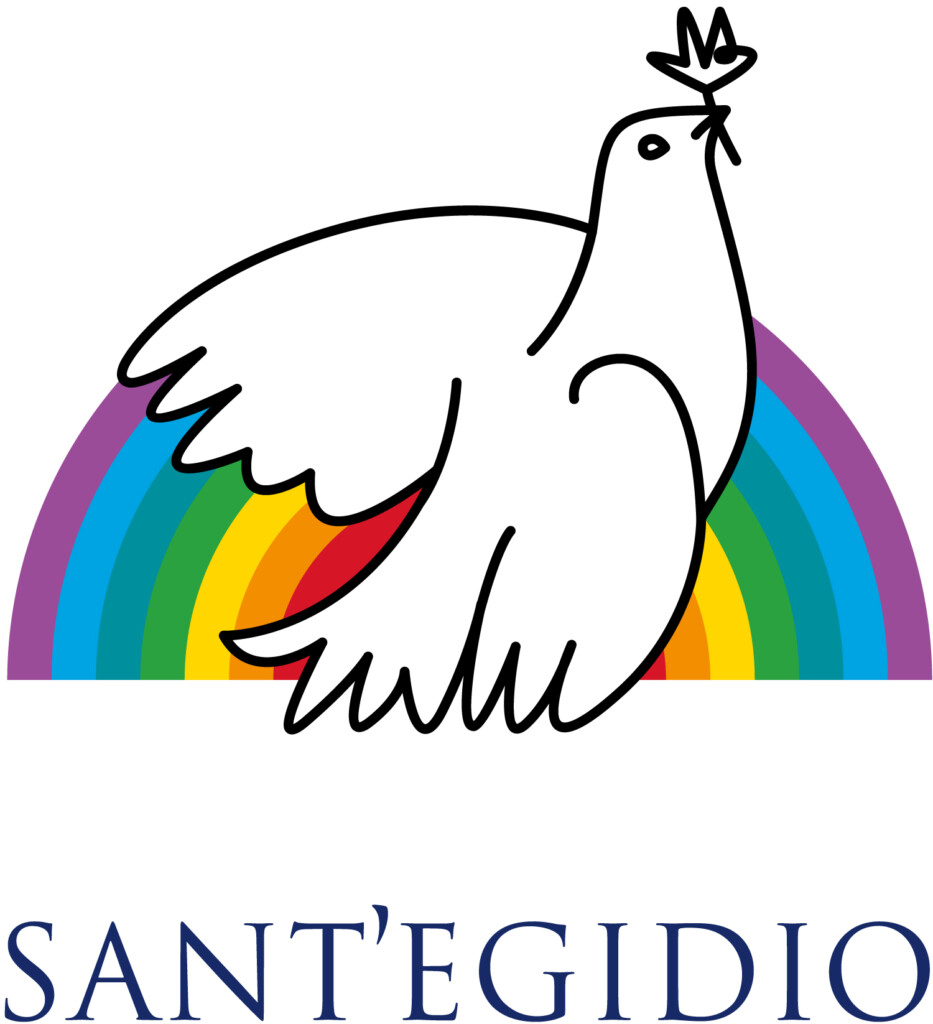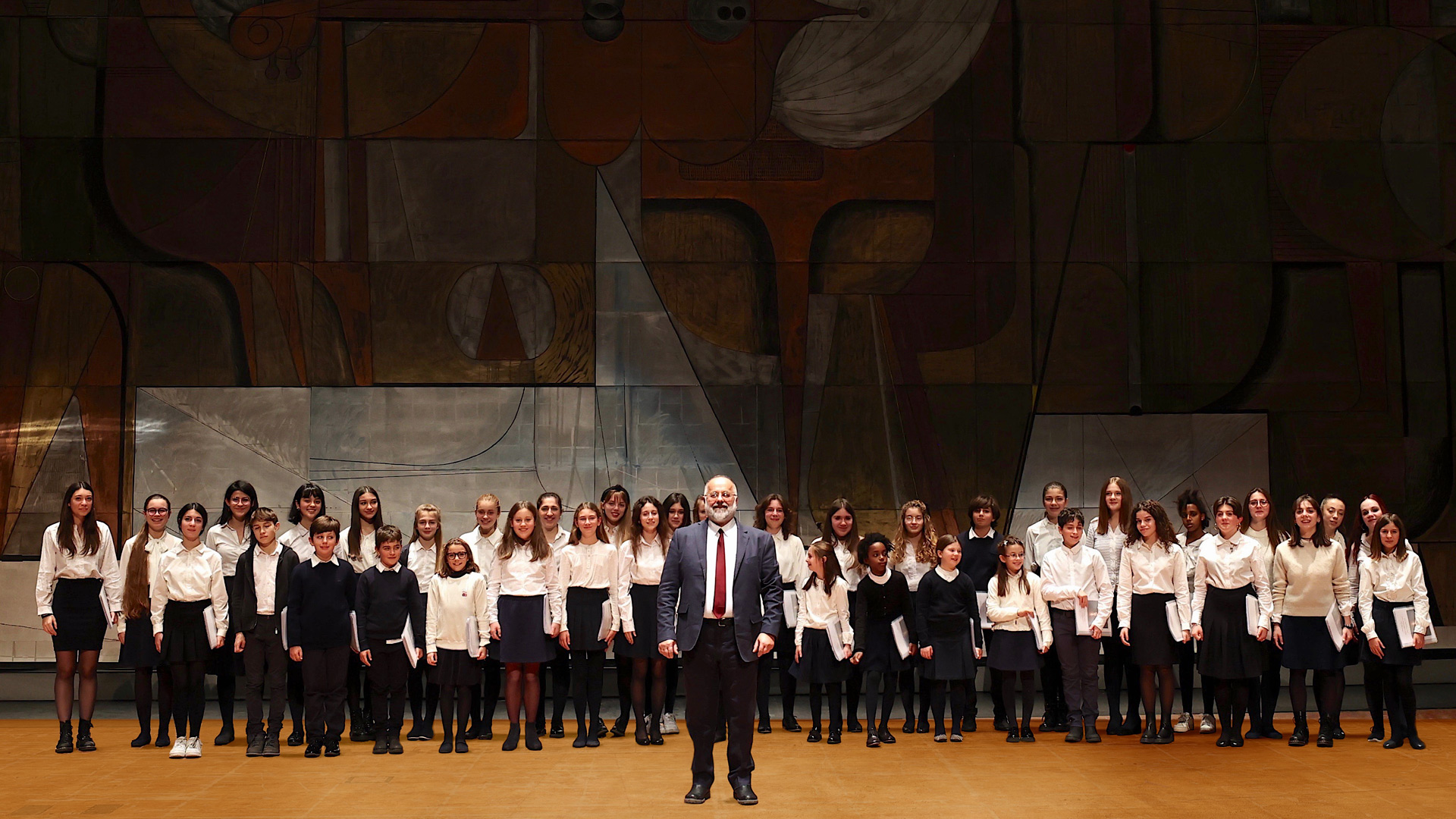LEONARD BERNSTEIN
Warm-up
from Mass
(Gino Tanasini adaption)
GEORG FRIEDRICH HÄNDEL
Lascia ch’io pianga
from Rinaldo
(Gino Tanasini adaption)
STEPHEN HATFIELD
Las Amarillas
GIACOMO PUCCINI
Closed-mouth choir
from Madama Butterfly
(Gino Tanasini adaption)
HENRY PURCELL
Strike the viol
from Ode for the Birthday of Queen Mary
(Gino Tanasini adaption)
GIACOMO PUCCINI
O mio babbino caro
from Gianni Schicchi
(Gino Tanasini adaption)
GIACOMO PUCCINI
Gira, balza
da Le Villi
(Gino Tanasini adaption)
MAURO ZUCCANTE
Il giovane Trittico
THOMAS JUNEAU
Scarboroug Fair
VIRGILIO SAVONA, LUIGI CICHELLERO, GIOVANNI GIACOBETTI
Però mi vuole bene
(adapted by Enrico Grillotti)
GIROLAMO FRESCOBALDI
Se l’aura spira
from Primo libro d’Arie Musicali
(Gino Tanasini adaption)
BENJAMIN BRITTEN
Now, until the break of day
from A Midsummer Night’s Dream
FREDDIE MERCURY
Bohemian Rhapsody
(adapted by Enrico Grillotti)
Conductor
Gino Tanasini
Piano
Enrico Grillotti
Treble choir of Teatro Carlo Felice
In collaboration with the Community of Sant’Egidio

The pieces on the programme follow a path that takes us on a kind of journey through the theatrical music literature of different times, not neglecting to focus in particular on works by Giacomo Puccini, whose death centenary falls on 29 November 1924.
Warm-up by Leonard Bernstein is taken from the opera Mass, which was first performed in July 1973 at the Konzerthaus in Vienna, and could be described as a secular Mass that questions the problem of God in contemporary society. The piece is essentially a canon generated by a syncopated melody that evokes the tolling of bells, which then leads into a liberating Alleluja.
The aria Lascia ch’io pianga is one of Georg Friedrich Händel’s best known pieces and is taken from the opera il Rinaldo of 1711 (although the melodic material had already been used by the composer in earlier works). The theatrical action is set at the time of the First Crusade and takes place in the Holy Land. Almirena – daughter of Goffredo di Buglione, commander of the Christians and betrothed to the champion Rinaldo – is captured and held prisoner by the Saracen king Argante: in the garden of the royal palace she weeps in despair at her condition as a prisoner. An adaptation for choir is proposed in the concert.
Las Amarillas is a fresh Mexican folk song arranged for choir by Canadian composer Stephen Hatfield. Melodies that sing of butterflies, flowers and love are woven into a complex and sparkling rhythmic web.
The Chorus with Closed Mouth from Madama Butterfly (1904) is the first Puccini piece on the programme: a plunge into the twilight magic of waiting, thinking of the palpitations of Cio Cio San waiting for Pinkerton.
This is followed by a further leap in time and space with a performance of Strike the viol that English composer Henry Purcell (1659-1695) included among the component pieces of the ode entitled Come, ye sons of arts and written for Queen Mary’s birthday in 1694. The text is an invitation to the awakening of the musical instruments called to unite in honouring the sovereign.
We return to another Puccini evergreen: O mio babbino caro that reproposes (in a choral version) one of Lucca’s best-loved arias from the opera Gianni Schicchi (1918). Although it is essentially a comic opera, melancholic situations develop in the folds of the plot. In fact, the aria is sung by the character Lauretta, who turns to her father (Gianni Schicchi) when the clash between the latter and the Donati family reaches such a point that her love affair with Rinuccio Donati is jeopardised. Also by Puccini is the next piece. Gira, balza! is a whirling chorus from the first opera-ballet written by the Tuscan composer Le Villi (1884). It is a story of love and betrayal inspired by Nordic folk legends in which groups of bewitched spirits, Le Villi, act.
The homage to Puccini continues with the piece Il giovane trittico in which composer Mauro Zuccante adapts some lyrical themes from the Trittico, namely the three operas Il Tabarro, Suor Angelica and Gianni Schicchi.
Thomas Juneau’s three-voice choral version of the ancient and famous medieval song Scarboroug Fair evokes Celtic atmospheres.
This was followed by the sardonic song steeped in ‘black humour’ Però mi vuole bene brought to success by the Quartetto Cetra in the 1960s.
Another leap back in time transports us to the late Renaissance polyphony of the composer Gerolamo Frescobaldi (1583-1643): Se l’aura spira tells of playful nymphs set in an Arcadian and pristine environment. The melodic invention of the Ferrarese genius.
The programme draws to a close with the final chorus from opera no. 60 by Benjamin Britten, which sets the famous Shakespeare play A Midsummer Night’s Dream to music. After an incredible tangle of events, falling in love, deception, quarrels and spells, the people of the fairies and elves, in the chorus Now, until the break of day, invite everyone to return to the warmth of their homes and rest.
To finish, a rock explosion, albeit contaminated by the spirit of opera theatre, with a performance of the well-known Bohemian Rhapsody that Freddie Mercury wrote in 1975 for his band Queen, who were busy recording the album A Night at the Opera.
Gino Tanasini

